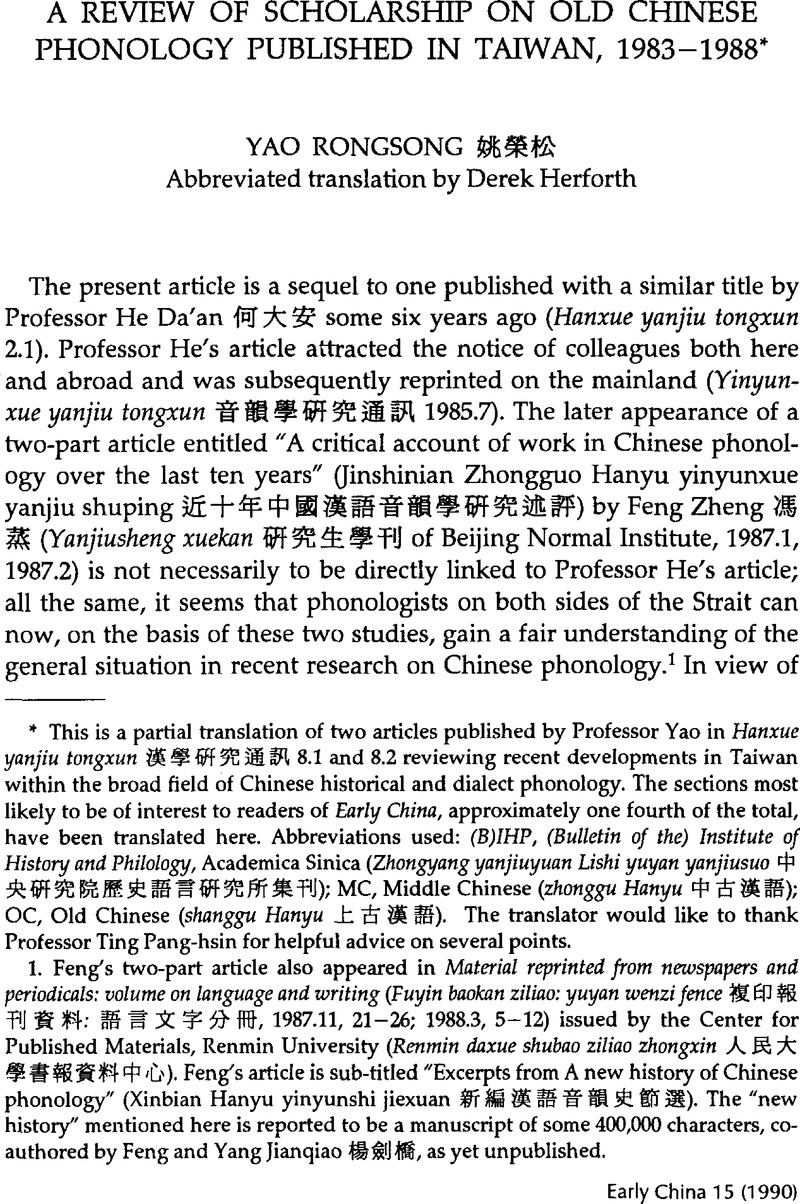No CrossRef data available.
Article contents
A Review of Scholarship on Old Chinese Phonology Published in Taiwan, 1983–1988*
Published online by Cambridge University Press: 26 March 2015
Abstract

- Type
- Reviews
- Information
- Copyright
- Copyright © Society for the Study of Early China 1990
Footnotes
This is a partial translation of two articles published by Professor Yao in Hanxue yanjiu tongxun 漢學硏究通 8.1 and 8.2 reviewing recent developments in Taiwan within the broad field of Chinese historical and dialect phonology. The sections most likely to be of interest to readers of Early China, approximately one fourth of the total, have been translated here. Abbreviations used: (B)IHP, (Bulletin of the) Institute of History and Philology, Academica Sinica (Zhongyang yanjiuyuan Lishi yuyan yanjiusuo 中央硏究院歷史語言硏究所集刊), MC, Middle Chinese (zhonggu Hanyu 中古漢語), OC, Old Chinese (shanggu Hanyu 上古漢語). The translator would like to thank Professor Ting Pang-hsin for helpful advice on several points.
References
1. Feng's two-part article also appeared in Material reprinted from newspapers and periodicals: volume on language and writing (Fuyin baokan ziliao: yuyan wenzi fence 複印報刊資料:語言文字分冊, 1987.11, 21–26Google Scholar; 1988.3, 5–12) issued by the Center for Published Materials, Renmin University (Renmin daxue shubao ziliao zhongxin 人民大學書報資料中心). Feng's article is sub-titled “Excerpts from A new history of Chinese phonology” (Xinbian Hanyu yinyunshi jiexuan 新編漢語音韻史節選). The “new history” mentioned here is reported to be a manuscript of some 400,000 characters, co-authored by Feng and Yang Jianqiao 楊劍橋, as yet unpublished.
2. Translator's Note: The reference here is to Wang Li's studio name, literally “The studio where both dragons and insects are carved” (Longchong bingdiao Thai 龍並雕齋). Wang has explained the “dragon” as symbolizing his more academic side while the “insect” refers to his popular, semi-literary pieces. See the preface to Li, WangLong chong bingdiao zhai wenji !並雕齋文集, vol. 3 (Beijing, 1982)Google Scholar.




